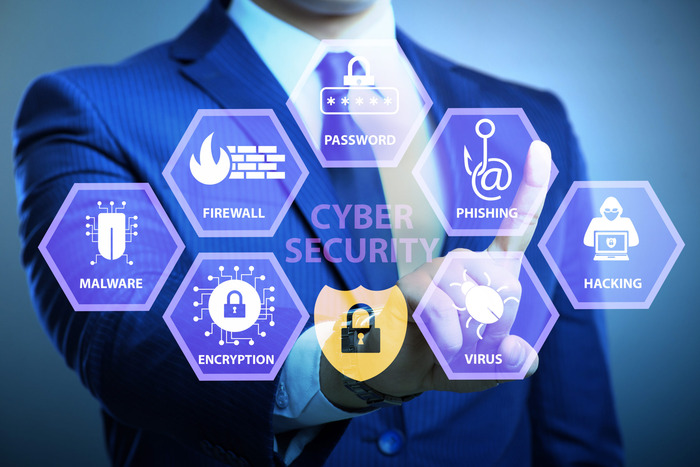Cyberattacks are a constant threat to online businesses, accounting for billions of losses annually. Viruses and ransomware can halt business processes, leading to costly downtimes. Hackers may also access sensitive customer information and other business assets, resulting in unauthorized fund transfers, account manipulation, and ID theft. Some cyberattacks lead to lawsuits and a tarnished reputation that requires complete rebranding to overcome. Here’s an overview of popular cybersecurity issues from the most recent to the earlier threats:
Deepfake and Synthetic ID Threats
Identity fraud has taken a new meaning with the recent development of deepfake technologies. Synthetic identity fraud attacks are becoming prevalent and could become a persistent challenge moving forward. The technology involves creating realistic videos and audio recordings of someone. Ordinary users may not immediately distinguish the synthetic videos and audio from the authentic faces and voices of the targeted person.
Deepfake media can be used to spread false information, conduct social engineering attacks, and create fake identities using real or fake information. Cybercriminals can use the technology to impersonate or blackmail senior and high-profile individuals using fake or compromising videos and statements. Deepfake can also be used to create counterfeit websites and to trick users into providing sensitive information. These threats were estimated to cause losses reaching $1 billion in 2022 and are expected to soar in 2024.
Ransomware as a Service
The 2020s have seen a rise in new threats, including supply-chain attacks and ransomware as a service (RaaS). Supply-chain attacks target suppliers and third-party vendors to infect their clients’ networks and devices. These attacks target IT and cloud service companies. RaaS attacks involve renting out ransomware to cyber criminals and illegitimate businesses, usually in the gaming and entertainment sector, to distribute them to clients in exchange for a profit.
One way to avoid RaaS attacks is to stick with legitimate businesses. For instance, choosing a top online casino website with a valid license and legitimate slots and games can protect you from software designed to infect your device. Legit casinos are powered by licensed software providers, payment methods, and digital services. They also offer 2-factor authorization, 24/7 support, anti-malware sweeps, advanced access control, and instant notifications.
AI and IoT Threats
Artificial intelligence (AI) threats are a recent development that most businesses are not ready to deal with. IBM’s X-Force Red team developed the DeepLocker AI-powered malware in 2018 to demonstrate the potential risk of such threats. The malware was designed to hide from traditional cybersecurity measures and only activated once it identified the target (particular face or voice). AI threats are sophisticated and may result in costly data breaches and unauthorized access to private information.
The Internet of Things (IoT) has also introduced new threats for modern business owners. IoT attacks were first reported in the latter parts of the 2010s, starting from 2017. These attacks involved compromising popular IoTs like security cameras, DVRs, and routers with weak or default login credentials, turning them into bots used for launching DDoS attacks on targeted websites. One such attack named Mirai took down Twitter (now X), Netflix, and Reddit. IoT and AI threats can be mitigated using network segmentation, behavioral analysis, device management, machine learning, and threat intelligence.
BEC and Ransomware Attacks
Business email compromise (BEC) attacks involve gaining unauthorized access to business emails with the aim of impersonating top officials. Perpetrators can impersonate senior executives and trick employees or customers into transferring funds or providing sensitive information. BEC attacks can be minimized using email filtering, antivirus software, backup-and-recovery, employee training, and access control.
Ransomware attacks became a persistent threat in the mid-2010s and are still a concern for modern enterprises. These attacks involve encrypting business personal files and computers and then asking for a fee in exchange for the decryption keys. Because businesses rely on their computers and files for daily operations, they may have no option but to pay the ransom needed to regain access to their files.
The Rise of APTs
Advanced persistent attacks, or APTs, are sophisticated attacks that can result in devastating damages. That’s because APT actors spend several months learning about their target and collecting data before launching an attack. APT perpetrators seek to steal sensitive information without being detected. An example is the 2010 Aurora Operations that targeted Google, Adobe, Yahoo, Rockspace, Akamai, and other big organizations.
The attack exposed software vulnerabilities in these companies, stealing intellectual property in the process. APTs were rampant in the 2008-2012 era but have been mitigated through VPNs, next-gen firewalls, intrusion prevention systems, and user behavior analytics. Threat intelligence also monitors international activity, allowing businesses to update security protocols and combat emerging threats.
Conclusion
Cybersecurity threats are constantly evolving, calling for ongoing development of security solutions to protect businesses and individuals. Technologies such as AI provide enhanced security and activity monitoring. However, the same technology can be used by malicious actors to develop sophisticated attacks that are hard to notice.
Understanding the different threats is critical to finding holistic solutions. Businesses and individuals must invest in cybersecurity solutions that address every minor threat to avoid the costly aftermath of a data breach. This may involve using VPNs, multi-factor authorization, advanced access control, secure payments, and third-party security services.


